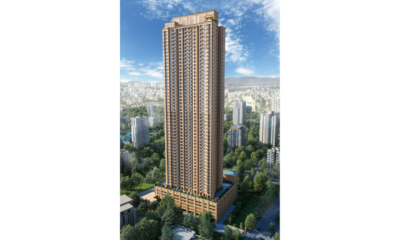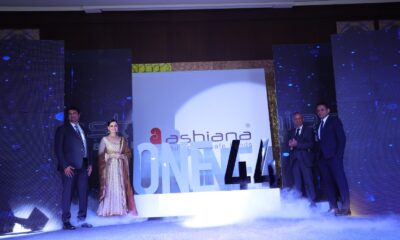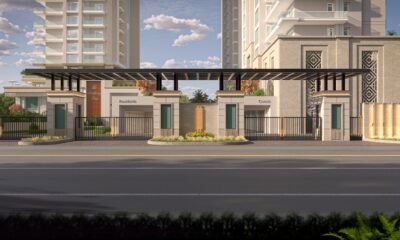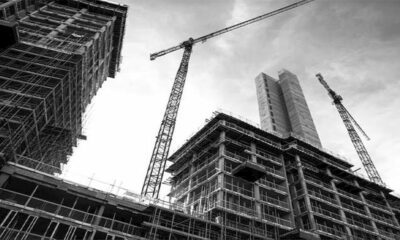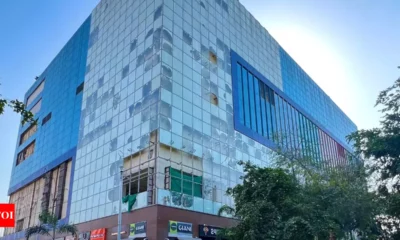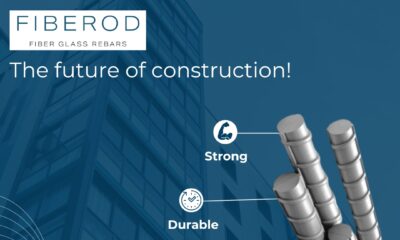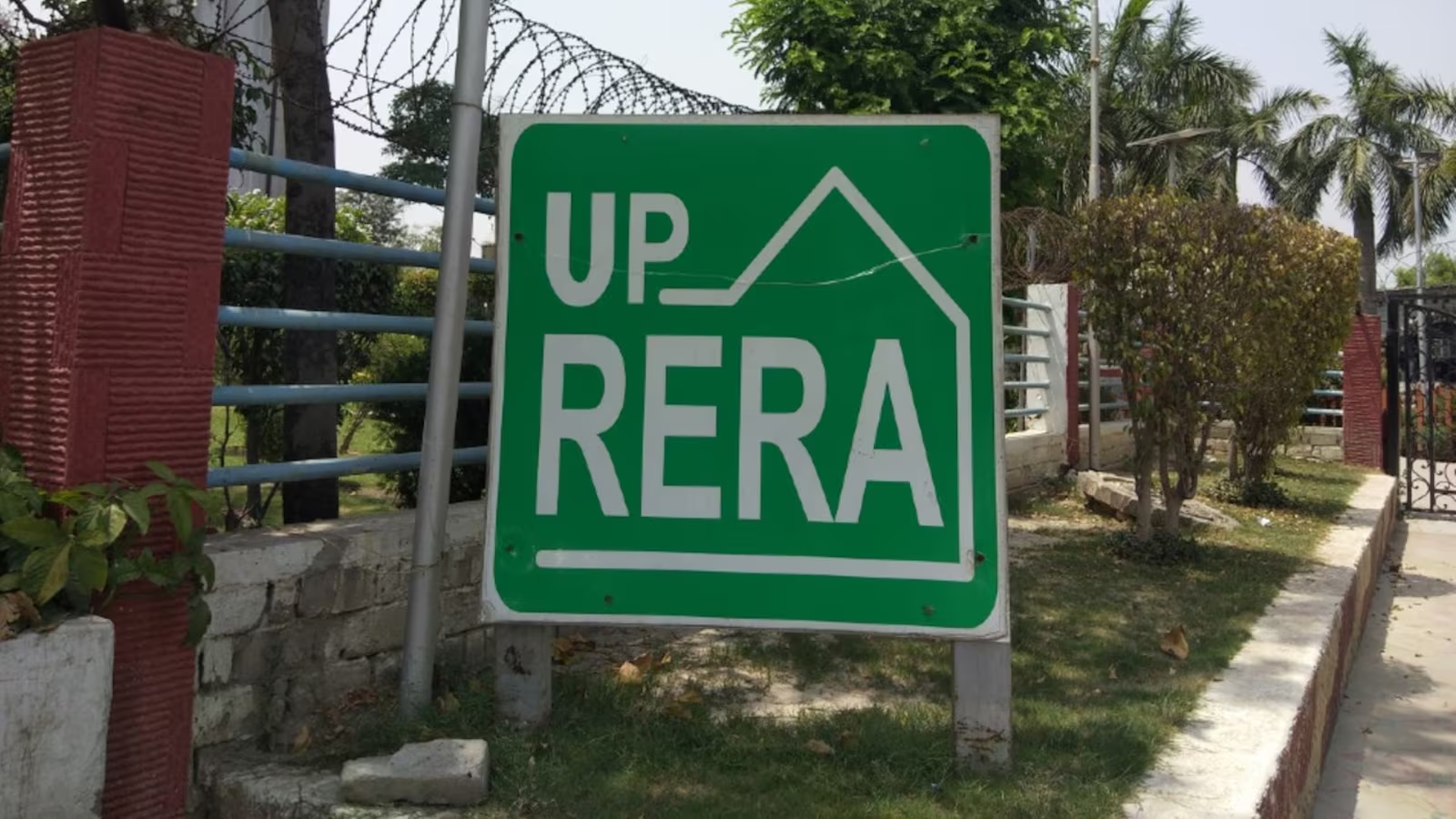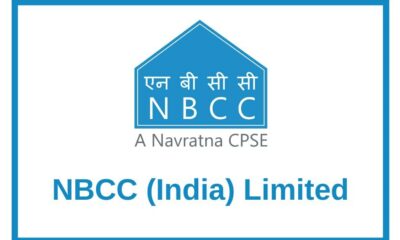Interiors
End impracticalities make RERA doable, ATS CMD Getamber Anand
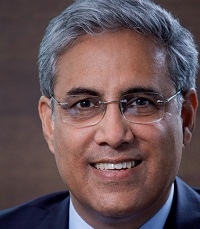

In our continuous endeavor to arrive at a better understanding of RERA, we approached Getambe Anand, CMD of ATS Infrastructure Ltd, who has created an admired realm in the field of real estate. We were pleasantly surprised that while appreciating the landmark legislation, he was forthright enough to point out some key issues which may prove to be an obstacle in its implementation. Anand, who currently spearheads the apex body Credai, picked up specific instances and emphasised why they needed to be looked at to make the entire thing practically doable.
A first generation entrepreneur, Anand began his professional career after completing a Bachelor’s degree in Technology from Punjab Engineering College, Chandigarh. An Industry icon and connoisseur, Anand rued the fact that aggressive activism by consumer bodies has been preventing the authorities from fine-tuning certain aspects of RERA even though they understand their impracticalities. Issues like cost of construction also need to be clearly defined, he told Team R&M.
Anand, whose company ATS’ real estate prowess extends across 20 million square feet of residential space, sounded highly logical when he said the problem is that everybody expects the developer to do what he has to do to make RERA work. It is not fair, he said. “There are four stakeholders in the entire game: developer, buyer, bank and the municipal urban local body. All four stakeholders have to change the way they were doing things, otherwise this Act cannot be a success”, was the industry veteran’s qualified warning to all.
The transcript of Team R&M’s detailed conversation with Anand is being reproduced herewith:
Realty & More: With RERA being the key topic of discussion in the industry, the first obvious question is how much is your company RERA-compliant?
Getamber Anand: Our company has always operated on SPV model where each project is being fenced financially from the holding co. This provides a lot of financial discipline as the cash flow which come in by way of sales is kept in that vehicle and that project. Construction, therefore, is totally focused and sales are also robust. Everything has been working like that. RERA also specifies the same thing and, therefore, I don’t see much of a challenge as far as our organisation goes. We are already operating on the same guidelines that RERA specifies now. We have been doing that since the last decade. The only thing is that we may have to do some fine-tuning for RERA. But, you know, there are certain rules which we feel are not practical. So, from Credai platform, we have appealed to various state governments.
R&M: What are those impractical rules?
GA: One thing which is very important and which needs to be looked at by various state governments is to define the cost of construction, to actually detail it. Today nobody has money to construct a project by his own money, he has to leverage, he has to borrow. The interest is also cost of construction, the salary of the people working is also cost of construction. There are many other small little things which are construction cost and they have to be detailed.
Maharashtra and Gujarat have been sensible enough to detail this cost. The other states have left it very ambiguous. There should be no room for any litigation once RERA is in place because it will jeopardise the supply and that would mean increase in cost. Eventually the consumer will suffer. We don’t want a constraint in supply.
There are many other such things. Like in the rule of UP, there is something which says that when you convey the completed apartment you can only convey the title of the apartment to the homebuyer. The common area, lift, lobby, etc., you have to convey to the RWA. Who pays the stamp duty for the RWA? If the RWA is not formed, 50 per cent of the sale is not done. Then, who do you convey it to? As a flat owner I am paying for the entire common area, but the conveyance is done in the name of somebody else. Who will agree to these things?
These are impractical and need to be looked at. That is why I am saying this should not be done in a quick cut, copy- paste fashion. It has to be practically doable. Only then we will see some positive outcome of RERA.
R&M: Does Force Majeure not include any policy change which results into completion delays?
GA: Force Majeure shall include these things. Maharashtra has been sensible enough and so has been Gujarat. Even cement shortage is also the Force Majeure. What do you do if you don’t get raw material? What do you do if you don’t get steel? It does qualify as Force Majeure. It should definitely qualify as Force Majeure. What I am saying time and again, what I am insisting on, what the association has been insisting upon to the ministry is please make it practical because if you don’t make it practical we will not be able to bring out enough supply. Today we are completing a project in four years. Now, it will take eight years. Who will suffer?
R&M: What are the responses of the respective state governments?
GA: Right now the activation is so aggressive from consumers that while the state governments do understand there is a need to make it practical they fear flak from activism or by consumers. I say that the activism is justified, in certain cases, not all across. You cannot paint everyone with the same brush. We have delivered and people are living in such fine complexes also. The activism is justified for certain projects, for certain developers, but you have to understand that people who are anyway doing a good job prior to this, will continue to do a good job. This Act should not act as an obstacle to do a good job and we want to keep bringing in good supply, robust supply, abundant supply. Therefore, there are certain issues in the Act which need to be addressed.
R&M: You might be having financial arrangements for your existing projects with your existing lenders about fund utilisation. Now you’ll have keep 70 per cent in a separate account. Will this create a problem now?
GA: Huge problem! Like I said, please understand every developer has to borrow money to build. It’s called construction finance, which is being provided to a project, and there is an escrow arrangement with the bank, which is normally 20 per cent and above of the cashflows. Now if 70 per cent is going to a separate account, 30 per cent is what you are allowed to draw plus land payment. So there is not much meat left for the bank. In some cases the escrow is even 40 per cent. So there is going to be a challenge over there. We will have to re-negotiate the entire deal with the banks. This will result in decreased lending.
R&M: Have the developers started speaking to the lenders?
GA: We have started speaking. But the banks say why should we compromise? So, it’s a tough situation, difficult situation.
R&M: Why can’t Credai make representation to the NBA?
GA: We will. We will make a representation to the NBA, as well as the RBI. See, everybody needs to change mindset. The problem is everybody expects the developer to do what he has to do to make everything work. It is not fair. There are four stakeholders in the entire game, developer, buyer, bank and the municipal urban local body. All four stakeholders have to change the way they were doing things, otherwise this Act cannot be a success. The developer alone cannot alone be held to make the Act work. It is unfair, it is impractical. All four stakeholders have to come together, work together cohesively change certain things they were doing in the past, and go ahead with the new things which are practical and stick to the Act.
R&M: But this is happening because of a bunch of developers only?
GA: Let us not generalise. Effectively, there have been good developments happening. People are living in good complexes delivered by other developers also, so you cannot measure everybody’s performance by the few who have not delivered or who have actually being bad. You cannot discourage the good developers from being aggressive in this business because there will be short supply, limited supply, which will affect the pricing to the consumer.
R&M: Has the activism you were talking about come due to this bunch of developers only?
GA: I agree. So I keep appealing to the customers also, be rational, have some rational. You I keep saying that your problems would not be solved by putting somebody behind bars. You all have come on the table and come out with a consensus to reach to a solution. See, with everybody there is an intent, nobody is going to run away, and there is an intent to sort out the problem, which can happen only by dialogue and coming up with a practical mechanism. It could be an escrow, it could be a joint development with the customer, it could be bringing in a new player. But the solution will come out only by a dialogue, not by putting anyone in prison.
R&M: Is Credai doing enough major awareness measures for its members?
GA: Yes, we are holding classes time and again for our members to sensitise them, to make them read the Act, clause by clause, so that they understand that this is how you have to change the way you are doing your business, this is the additional manpower you have to bring in your organisation, for this and for GST also. These two things coming together you will see in coming times. Both these things will add cost to the product.
GST is going to add a cost if the land abatement is not given. First for service tax land abatement was given, 75 per cent land abatement was given. Say for example keep the construction cost as Rs 2,000 per square foot, then a back of the envelope calculation shows that input credit per square foot for a Rs 2,000 a square foot comes to about Rs 370 to Rs380. If the product is priced at Rs 5,000/sqft, sale price, and 12 per cent GST means the outflow is Rs 600. Rs 370 you get credit. That means there is still a deficit of Rs 230, which the customer will have to pay. The customer was paying 6 per cent service tax and VAT prior to GST. So if the price goes beyond the Rs 5,000, suppose Rs 7000r per square foot, then what happens? Suppose in Mumbai it is Rs 14,000, in Metros you don’t get land easily, it is about Rs 7,000 in better locations in Pune, Hyderabad, etc. So at Rs 7000, at 12 per cent, it is Rs 840, construction cost remaining the same at Rs 2000 and input credit is still Rs 375, so who pays the balance – the customer.
R&M: But what happens in Tier-2 and Tier-3 cities where the land cost and the construction cost are low?
GA: Upto Rs 5,000 the customer will still have to pay about 4 per cent
R&M: And in case of low-cost housing?
GA: It keeps reducing like that. For the sake of discussion, let’s take an example. You cannot have a product which is less than Rs 3,500 per square foot, the GST is about Rs 420, which is still a deficit, because input credit is Rs 370, but yes at Rs 370 the deficit now is just Rs 50, so there is a saving to the customer, we are saying for low-cost and affordable you please waive GST, like you have waived the service tax.
R&M: Coming to ATS, what are the projects in the offing?
GA: If you look at the entire supply pyramid, maximum meat is at the base. We are now targeting at the portion which is little above the base, because the base is done by the State. We are looking at LIG housing in Tier-3, 4 towns. We are looking at Bulandshahr, Bareilly, Agra, Muradabad and Bijnor. We have already done projects in Bulandshahr, Muradabad, and in Bareilly, the project is under construction.
R&M: Is ATS not planning to do any project outside UP?
GA: Outside UP, yes! Once we become good at this, how to make a product which is cost-efficient for us, and we still make money, we will go outside UP also. But we are creating a separate platform for affordable housing, and that will be in the metros, high-rise buildings, because there is a demand in metros. But we are doing it very scientifically, not rushing, not jumping into it. It is going to be a very measured, scientific approach. We are already on it. We are creating a platform. You will hear some news about it in the future, shortly!
-



 News3 weeks ago
News3 weeks agoKW Delhi 6 Mall Onboards New Brands
-



 News4 weeks ago
News4 weeks agoManasum Senior Living Launches IKIGAI GOA, A Senior Living Community in North Goa, in collaboration with Prescon Homes
-



 News2 weeks ago
News2 weeks agoGodrej Properties Sells Rs 3k cr+ Homes of Godrej Zenith, Gurugram, within 3 days
-



 News4 weeks ago
News4 weeks agoBridging India Divide: Top 5 Tier- 2 Cities to Focus On
-



 News3 weeks ago
News3 weeks agoCommercial Realty Gets Tech Savvy: Fast Construction, Enhanced Convenience
-



 News4 weeks ago
News4 weeks agoMultipoint Connection – A Definite Boon
-



 News3 weeks ago
News3 weeks agoRBI’s Status Quo on Key Policy Rates to Help Maintain the Real Estate Growth Momentum, Say Industry Stalwarts
-



 News1 week ago
News1 week agoOlive Announces Dhruv Kalro as Co-Founder







